
With the added ultra-wide camera and Night Mode, improved selfies, industry-leading A13 Bionic chipset, Gigabit LTE and Wi-Fi 6, and iOS 13 operating system, all starting at $699, iPhone 11 is the most compelling iPhone Apple has ever made.
It's so close in capabilities to the iPhone 11 Pro that only display, camera, and radio nerds may really notice any day-to-day differences. And, for exactly those nerds, I'll also be posting a much deeper, more detailed review of the iPhone 11 Pro and iPhone 11 Pro Max, so be sure to check that out.
For this review, I want to focus on what makes the iPhone 11 the new iPhone for everyone. Everyone who has an iPhone 6 or earlier and is looking for a new phone to keep getting the latest updates. Who has an iPhone 6s or iPhone 7, and is thinking it's time to trade in and move up.
Who might even have an iPhone 8 and is finally ready to give up the Home button, or an iPhone X, and wants a dual-camera system that's just a little brighter and wider, or maybe even a return to LCD.
Ultimately, it's about figuring out what's right for you, or for you and your family. And that's what this review is here to help answer.
UPDATE: A week later, fully two weeks after I first started using the iPhone 11, I've gone through and added additional information and experiences.
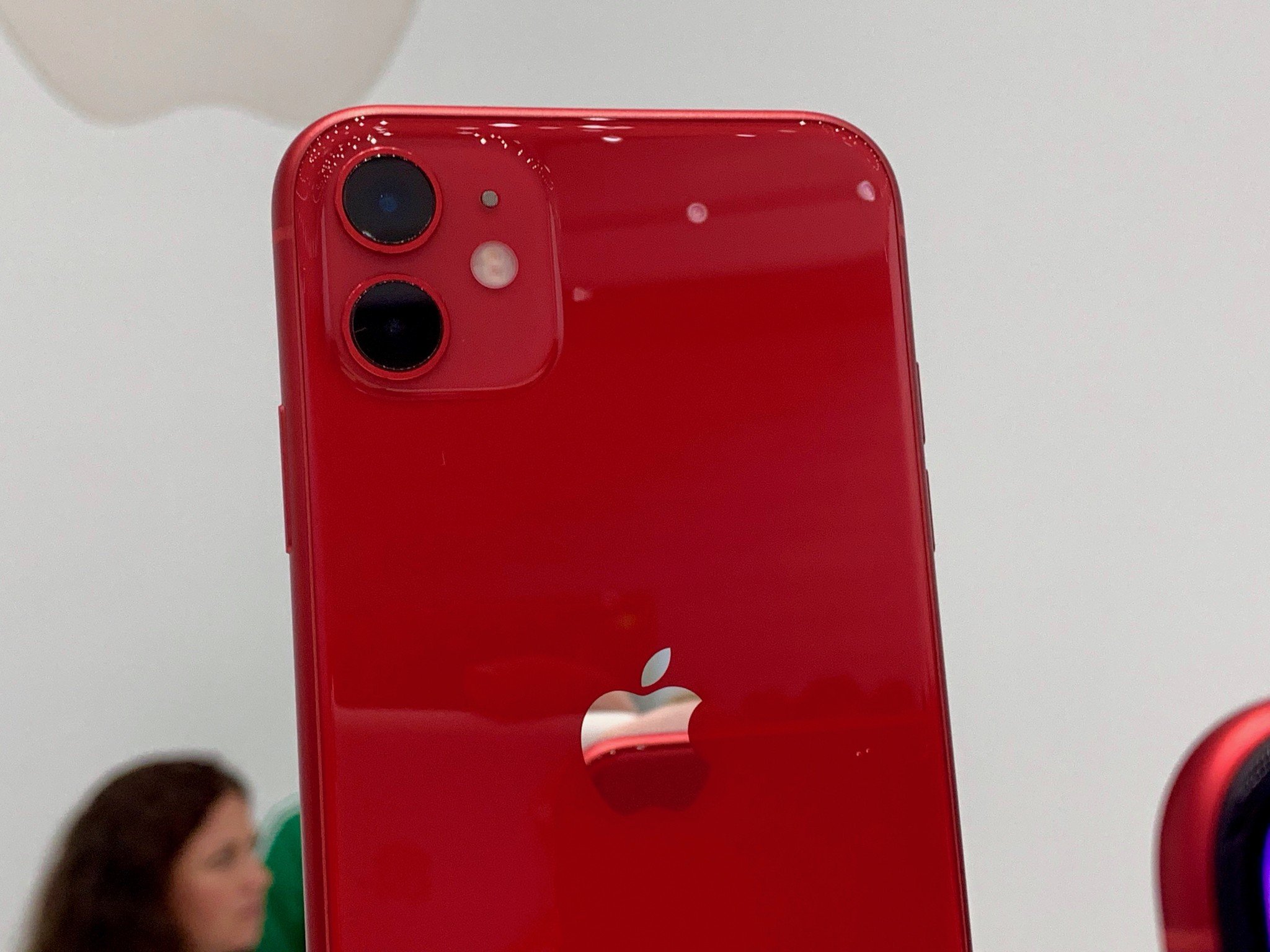
This is the new iPhone, not the pro, not the low.
The iPhone 11 is more akin to a replacement for the iPhone XS than the iPhone XR. It's powered by the newest processor, has the latest two-lens camera system, and comes in at an affordable starting price. It's the perfect iPhone for most people.
iPhone 11 Review: In Brief…
For people who want:
- Edge-to-edge design with gesture navigation.
- Dual-camera system with wide and ultra-wide angles
- Depth-aware front-facing camera.
- Face ID biometrics.
- A 6.1-inch display.
- Industry-leading performance
- Colors!
Not for people who want:
- Classic iPhone design with Home button.
- Triple-camera system with telephoto angle.
- No notch.
- Fingerprint identity biometrics.
- An OLED display.
- Android
At a glance, the iPhone 11 looks almost identical to last year's iPhone XR in size and shape. It's got a bigger, better camera — two of them again — and a bigger, matte camera bump to go with them.
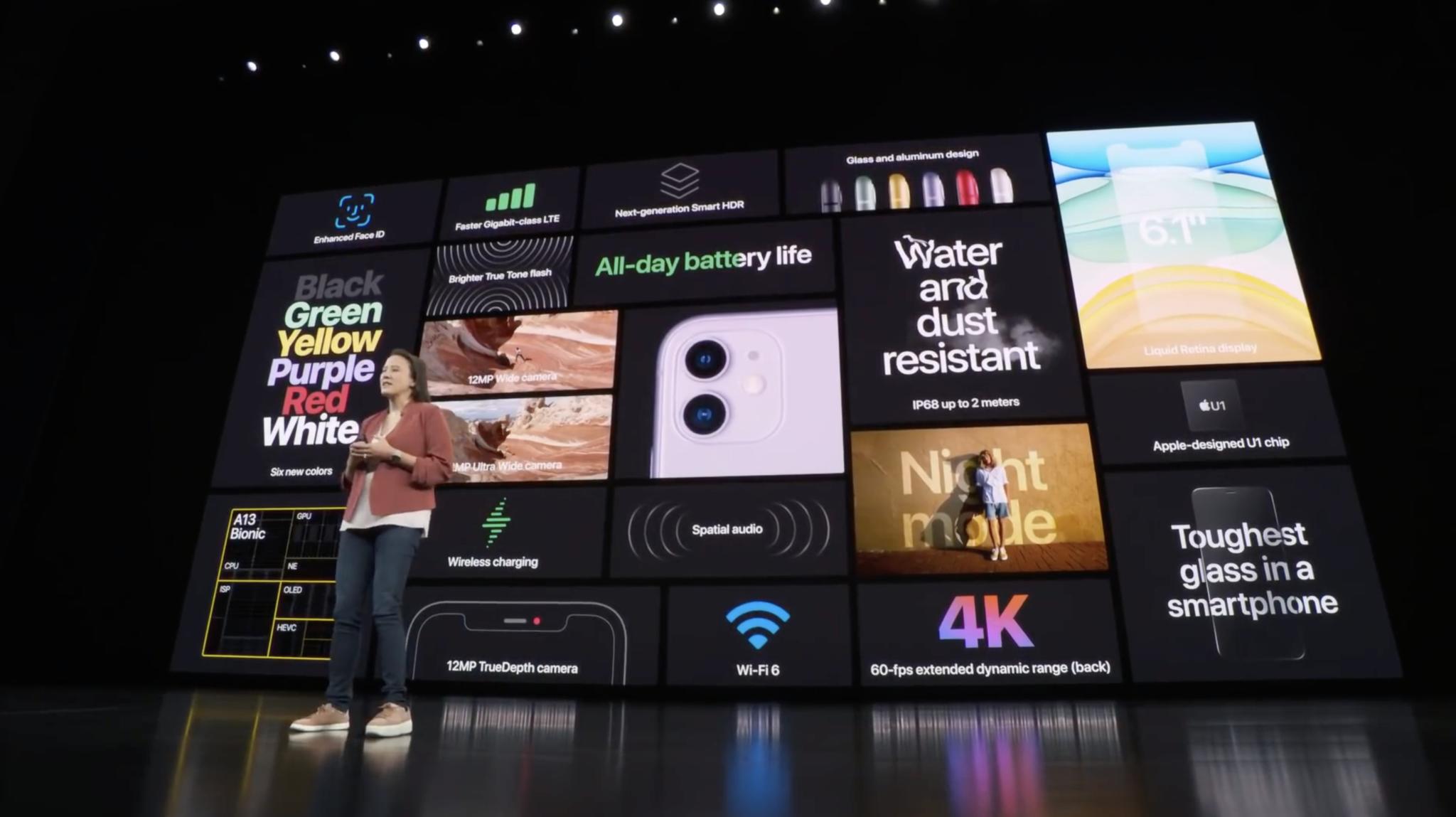
The Home button, forehead, and chin, are still gone, as is the headphone jack. But, these days that's the norm, not the exception.
It's still Lightning, not USB-C, and still includes a 5 watt USB-A charger, not the beefier 18 watt USB-PD charger now included with the Pro. Though, if you pick one up separately, you can fast-charge to 50% in just 30 minutes.
You can also still charge inductively with a Qi pad at the same 7.5 watts as last year.
The speakers are new and offer spatial audio, which will precisely place 5.1 surround or Dolby Atmos sound to precisely match any video that supports it.
The notch is still here, but now it houses an even faster, more reliable Face ID and a wider, 12MP selfie cam that goes to up to 4K and, yeah, shoots slow-mo selfie video.
Glossy, glassy black and white are still options, but there's also a paler yellow this year, and a slightly different Product Red. Sky blue and coral orange are gone, though, replaced with a lavender purple and mint green.
That glass is also tougher, so hopefully harder to scratch or shatter. Water resistance is still 30 minutes but up from IP67 and one meter to IP68 and two meters. Just take it easy dropping it in the deep end.
Apple says the battery will last an hour longer than the iPhone XR, which — ugh, math — makes it 2.5 hours longer than the iPhone 8 Plus. Roughly 17 hours of local video, 10 hours of streaming video, and 65 hours of wireless audio. Thanks to the huge leaps forward in the Pro models, the 6.1-inch iPhone is no longer the battery life leader, but it packs plenty of power.
There's still a dual SIM, one nanoSIM card, one eSIM. I know some people want dual cards. I can't wait for dual e, but it's upgraded to Gigabit LTE, up to 38% faster Wi-Fi 6, and up to 45% longer-range beam-forming Bluetooth.
It's also packing Apple's top-of-the-line, industry leading chipset, the A13 Bionic. A13's efficiency, performance, graphics, and neural cores aren't just 20% faster each, they use 40, 25, 30, and 15% less power respectively. It also has 4GB of memory instead of 3GB like on the XR, and brings with it a machine-learned ton of new photographic and other features we'll get to in just a few minutes.
Storage options remain the same at 64, 128, and 256 GB, but the price is now $50 cheaper for all of them. So, go for at least 128. You'll thank me later.
I've been using a purple iPhone 11 review unit running iOS 13.0 for almost a week, both while traveling in California and here at home in Montreal, Canada.
And there's a lot here to credit here, but also a good amount still to critique.
Let me explain.
iPhone 11 Review: Design
The iPhone 11 is basically more iPhone XR for less. In case you missed it, or got somehow bamboozled by the repeatedly confused biz pub coverage, the iPhone XR was the most popular iPhone of the last year and, reportedly, the most popular single smartphone phone sold, period. So, taking a bestseller and making it even better also happens to make exactly the kind of sense that does.
The iPhone 11 is the same height, width, depth, and even weight as the iPhone XR. And I straight up love this size. I was a die-hard iPhone Plus-er from the 6 to the 8, but then I found the X's edge-to-edge display was big enough for me that when the Max rolled around, I stayed with the min. But, then, I got my hands on the XR and it was Goldilocks just right in the middle.
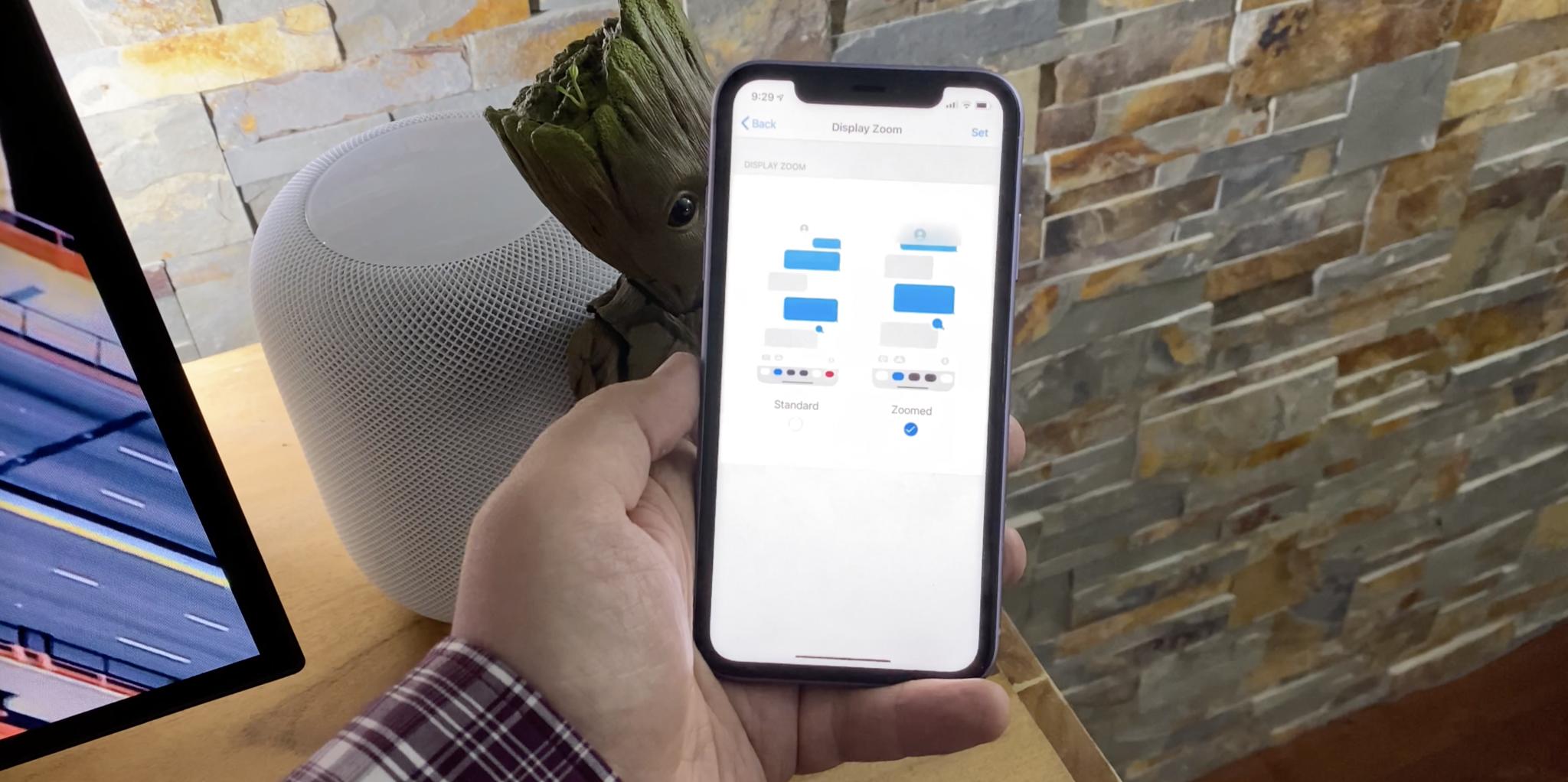
I also love that it has Display Zoom, which basically takes the next smaller interface size, in this case the one from the 5.8-inch iPhone Pro, and scales it up to fit its own 6.1-inch screen. That makes everything, every image, every word, just that much bigger, easier to see, and easier to read.
I don't need it quite yet but I have a lot of friends who do, and while it's available on the Max as well, it's not on the regular Pro because there's no even smaller interface than that to scale up. At least not yet.
The iPhone 11 has the same 6.1-inch 1792-by-828-pixel resolution LCD display as the iPhone XR and the same 326 ppi density as the original Retina display, the iPhone 4. Last year, some people gave Apple grief over those numbers, forgetting that unless you're strapping your phone to your face for VR, pixel quantity just isn't as important as pixel quality.
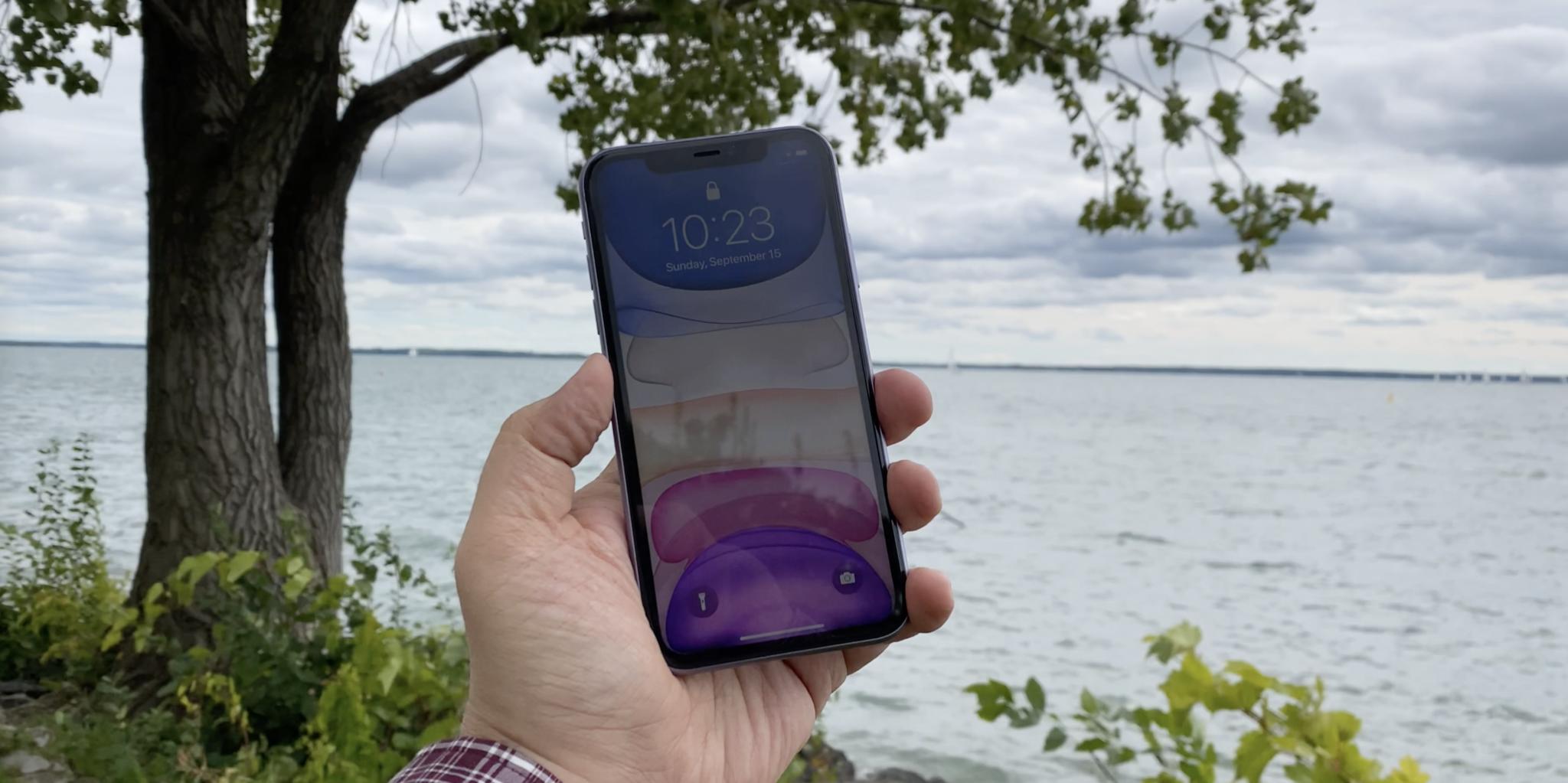
And Apple's quality is still some of the best in the business. Combine the higher RGB sub-pixel count to similarly-sized PenTile OLED displays, add everything from individually color calibrated and managed, wide gamut, True Tone ambient temperature matching, and what Apple calls Liquid Retina still looks terrific.
I do miss the inky blacks, high dynamic range, and peak brightness of the OLED iPhone 11 Pro, but I'm a display nerd. Anyone who thinks pulse width modulation on OLED phones gives them eye strain will really appreciate that LCD is still an option. At least for now.
But… I do think a bump here to honest-to-Plus-sized iPhone 1080p would have been better. It would have added that final bit of crispness for closer-than-Retina viewing. Especially if it could have also expanded the display just enough to delete what little's left of the bezel, which is still thicker on the LCD iPhones than the OLED Pros, which makes it look even more dated compared to the more recent, more expansive devices from the likes of Samsung.
I'd love to see the display just blasted all the way out into the antenna bands. That would be pure, screen-to-bezel ratio fire.
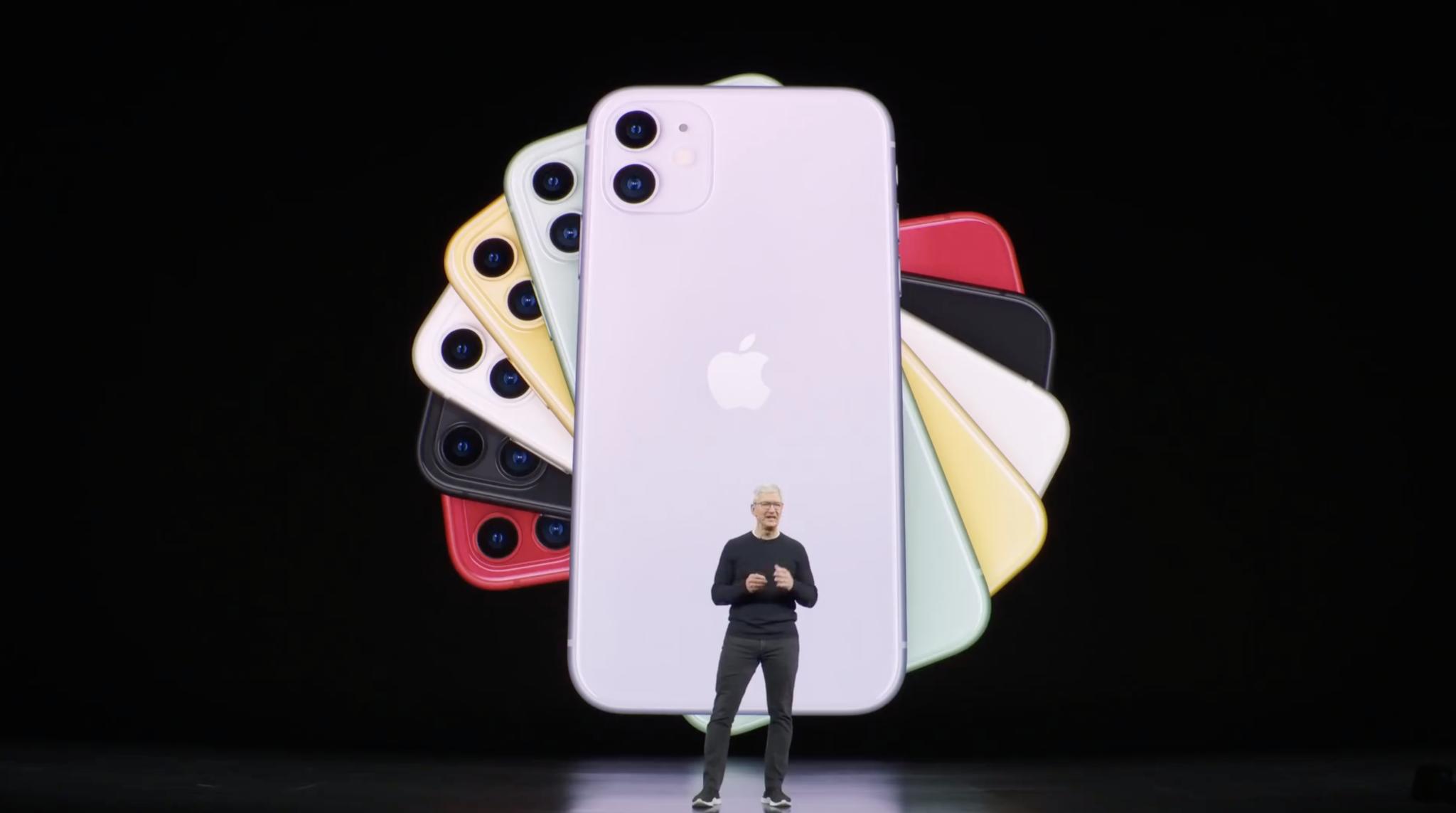
I also preferred last year's colors to this year's. Apple has tweaked the black and white, but not so much as I can really notice the difference. The new PRODUCT RED seems, I don't know, a little rosier if anything. It's fine. The yellow is paler, and while I don't like the shade as much, I like that the bands match way better than they did last year.
The purple and the green… I'm just not a fan. Again, personal opinion, but I've waited a long, long time for a purple iPhone and what I got was more like lavender creme than grape explosion. Likewise the green, which is more mild mint than zesty lime. They're just… Miami Vice, but, you know, not even the Archer version.
If pastels are the trend and one of these will once again be Pantone color of the year, like coral was last, so be it. I'll be out back yelling at the swatch clouds. But, to me, they just lack a little punch, a little spice. Things Samsung and Huawei have been doing really, really well lately.
And, at the bottom, is the good old, increasingly old at this point, Lightning port. I'll talk about USB-C in the iPhone 11 Pro review but, for the very much mainstream iPhone 11, I think the very much mainstream Lightning port is still fine. Maybe not ideal, as more and more USB-C becomes available. But fine, same as it is on the mainstream iPads.
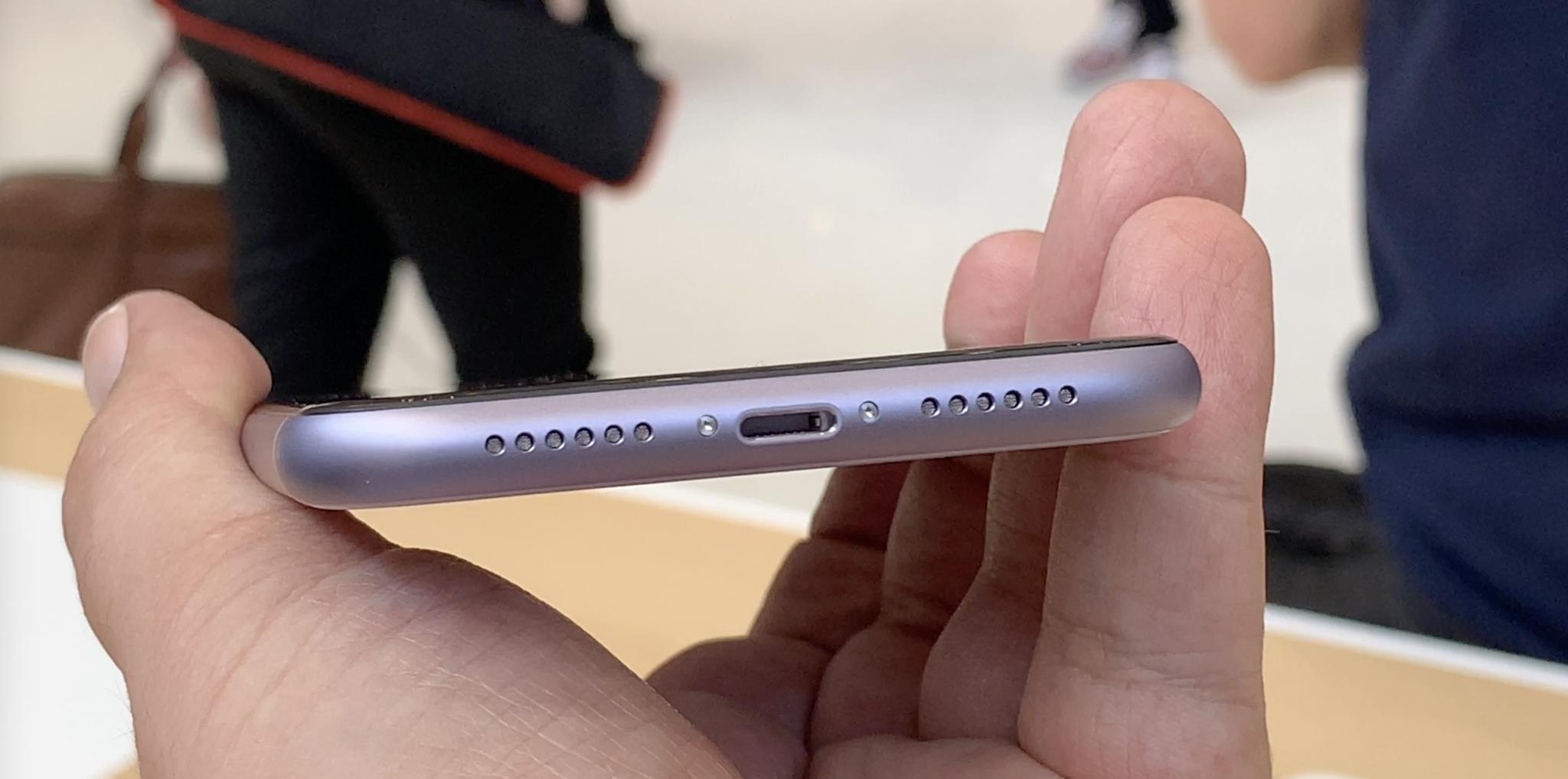
There are just so many people with so many existing cables and accessories that even Apple, famous for ditching floppies and jacks, before anyone is really comfortable with the idea, is wisely waiting just a little bit longer. Who knows, maybe even for something just a lot better?
Water resistance is blessedly better. The rating, which really only mean what the manufacturers attest they mean, have gone from the XR's IP67 to the 11's new IP68, and from 30 minutes at up to one meter to 30 minutes at up to two meters. That's the same as last year's iPhone XS if not quite as good as this years' iPhone 11 Pro.
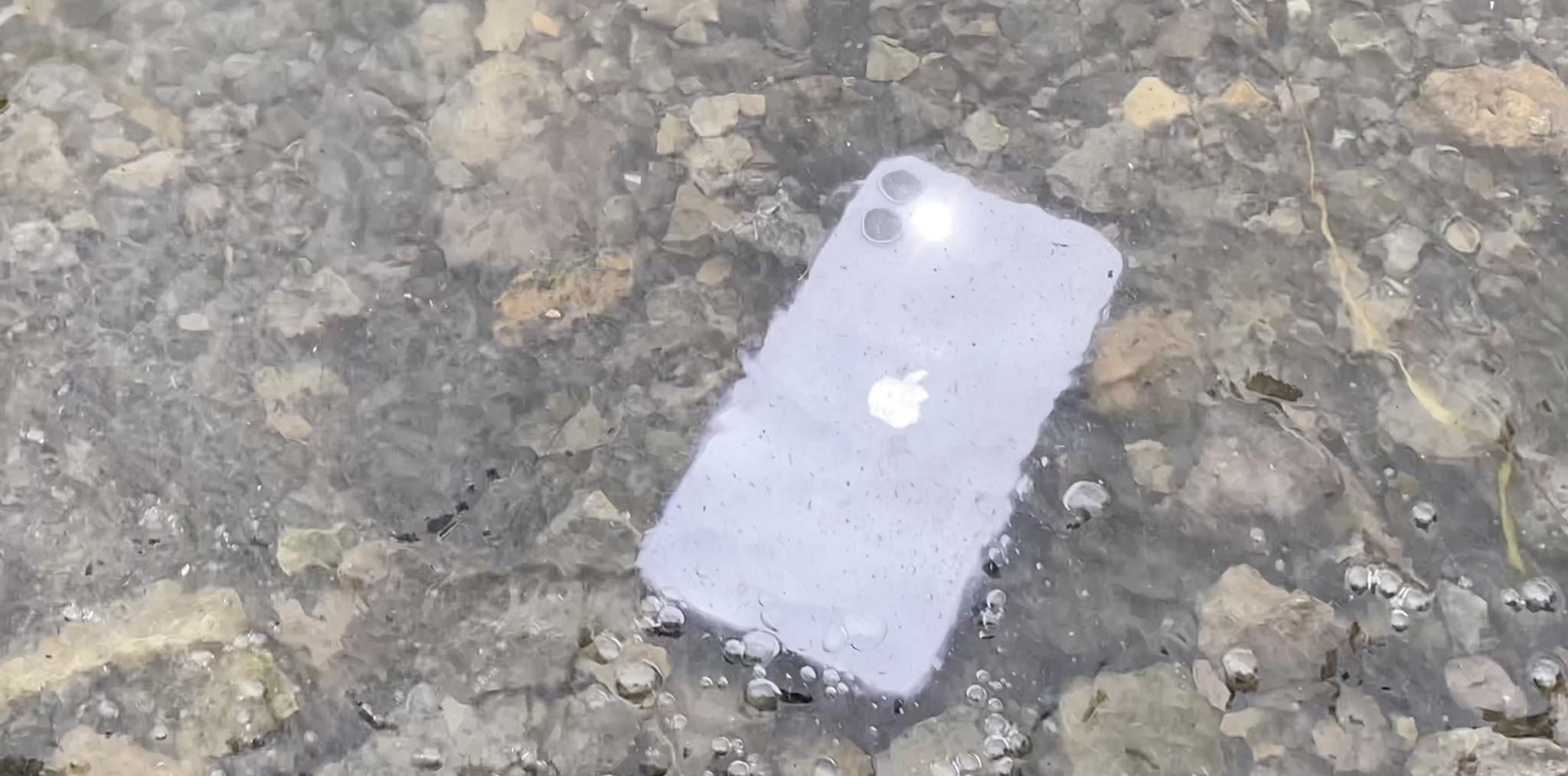
In other words, getting your iPhone 11 wet from either sudden rain or spilled coffee, or, sure, the occasional base dive into the toilet bowl is even less of a problem now than it was before. But, water resistance can and will degrade, so it's still no replacement for a proper underwater case if you want to take your iPhone 11 swimming, diving, or bowl hopping on a regular basis.
The camera bump, which is milled out of the rear glass but matted up to contrast with the shiny finish of the phone, now encompasses not just both cameras like every iPhone has since the 7 Plus did, but the flash and rear mic as well. And it's… hidee-aciously ugly. Weirdly uglier to my eyes than the triple camera version on the back of the iPhone 11 Pro.
Real world cameras, especially real world multi camera systems are just as ugly, they've just always looked that way. The iPhone has it and I'm not used to it at all. I keep thinking it's the owl Animoji, staring at me, head all twisted to the side, just staring...

And yes, I know Apple gets knocked all the time for being too much form over function but the truth is, whenever Apple does function over form, they get KTFO'd way harder for it.
The two stage bump does better hide how far the cameras actually project out from the back, but I just liked the X-style better. At least for the double camera system. Your bump mileage might vary.
Both the contrast and the size do make it look like Apple is intent on owning the look. Leaning into it even. And hard. But, they kinda have to. Apple still wants good optics and good optics still want good z-index.
At least until computational finally kicks the crap out of physics.
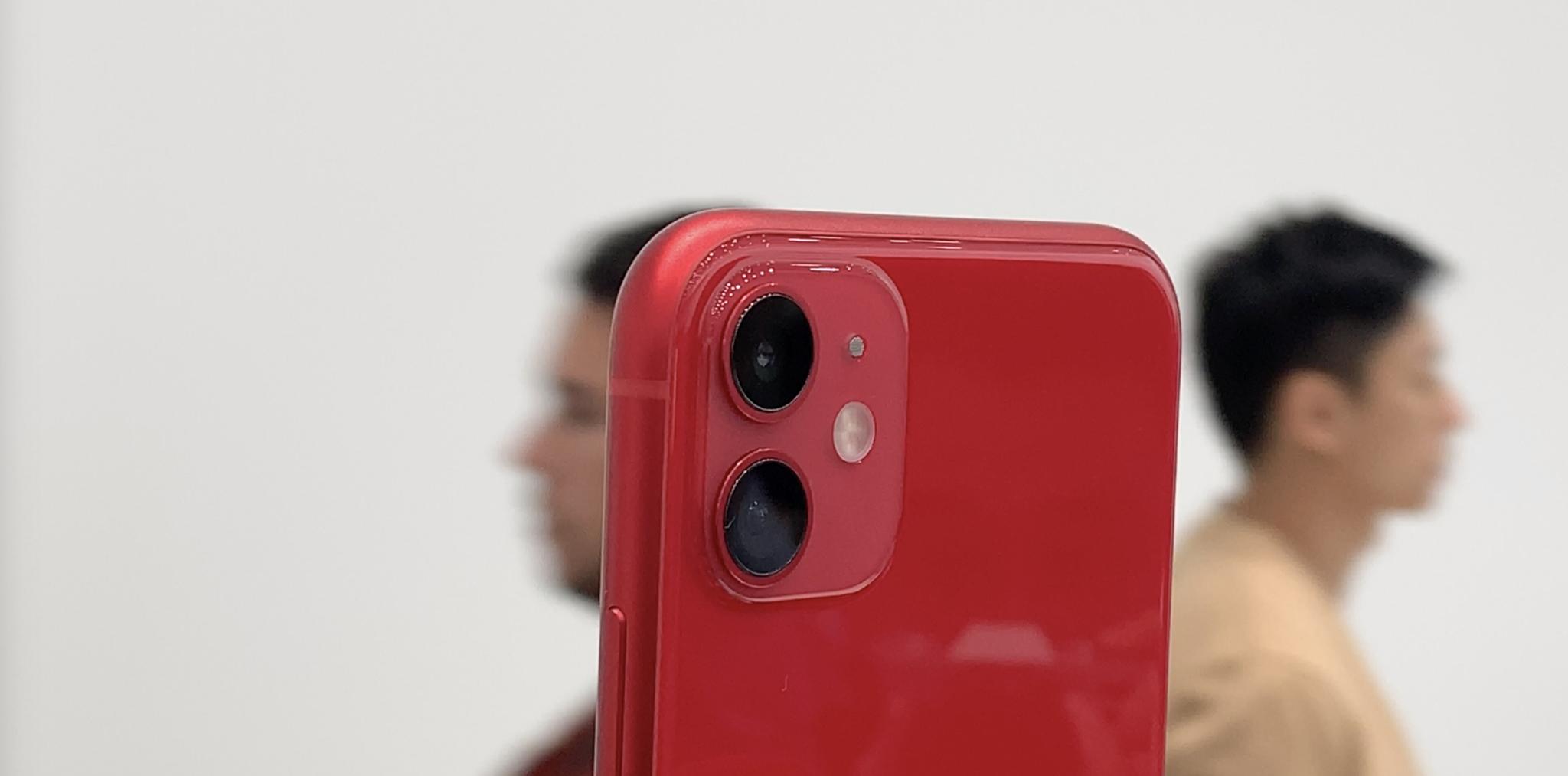
Overall though, I love the iPhone 11 design. I know some people are exhaustingly bored and just want Apple to make a triangle or donut shaped phone or whatever, but as I've said before, this is Apple's current platonic ideal for form iPhone. And I don't see them changing it until they find something that isn't just different, but is objectively much better.
So, the iPhone looks like an iPhone, the way a Porsche looks like a Porsche, an Omega looks like an Omega, and a Leica looks like a Leica. Companies don't kill this kind of brand identity. They kill for it.
iPhone 11 Review: Speakers
The speakers have gotten significantly better with iPhone 11. They're not just stereo now. If your media offers 5.1 surround, Apple will project spatial audio using their own, custom virtualizer. It even supports Dolby Atmos, which means when you're watching a movie, it doesn't sound like the audio is coming from just one side or the other. It sounds like its coming from a stage projecting right out of the iPhone. Kinda spooky, but all tones of cool at the same time.

I imagine that giant, state-of-the-art audio lab Apple built for everything from AirPods to HomePods is really just taking all their mic and speaker technology to the next level.
I wear AirPods when I'm with other people or out and about. I don't hold the speaker up to my ear like some kind of loud, noise-splattering animal. But, when I'm alone, I do use the speaker a lot, and spatial audio has changed it from something I just do, to something I actually really enjoy doing.
iPhone 11 Review: Ultra Wide Angle Camera
Last year, one of the most severe compromises Apple made with the iPhone XR and its lower price point was to ditch the iPhone X's second camera — the effective 53mm telephoto.
This year, with the iPhone 11, Apple is bringing the second camera back. But — plot twist — not as a telephoto — as an effective 13mm 120º ultra-wide-angle.
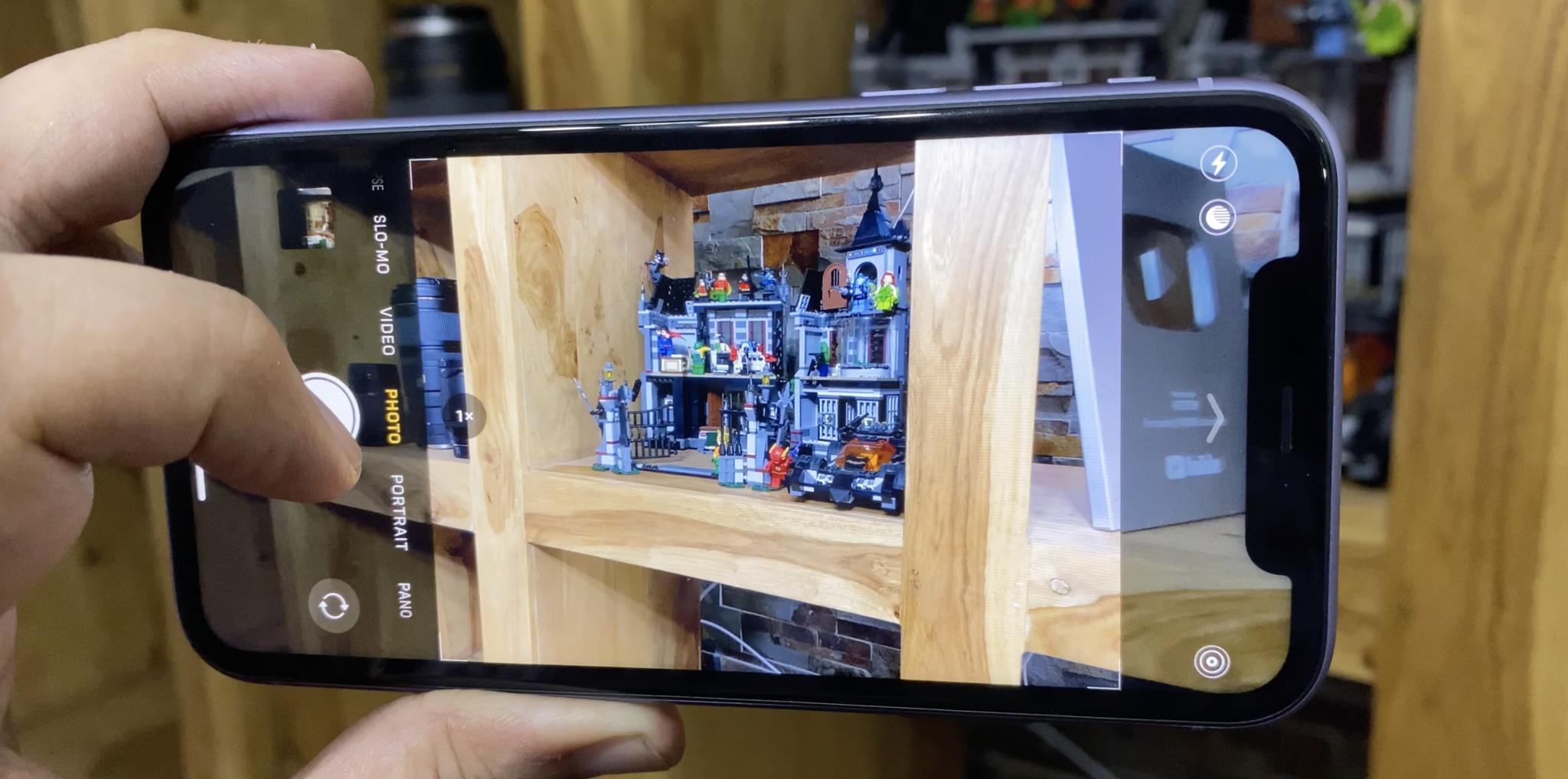
And I think that's clever. You can always zoom in and enhance the regular wide-angle data to fake telephoto well enough in most cases. But you can't simulate a wider angle. There's just no data for it at all.
So, this combo ultimately provides more flexibility and capability than the alternative.
The ultra wide doesn't fisheye either, if anyone has any concerns about that. It does stretch out as it gets close to the edges. You know, like an Unbox Therapy video when he holds his arms out towards the camera.
Apple leaned into that in their demo, showing how you could use it to create an elongated effect. But, it's something to be aware of if you have faces or other elements that'd look more… comedically distorted near the edges. Unless that's what you're going for.
The camera app interface has been jazzed up to support ultra-wide as well. From the moment you launch it you'll see the familiar wide-angle preview but, also, transparently at both sides now, a hint at what the ultra-wide angle camera is seeing as well. Not a simulation either, but an actual, real-time fusion from the real camera, because the iPhone 11's silicon system is cool — and ridiculously powerful — like that.
Switching between wide angle and ultra wide angle is the same as switching between wide angle and telephoto on previous iPhones. You just tap the little button, only now it toggles between 0.5 and 1 on the iPhone 11 instead of 1 and 2.
Yeah, it's a 0.5x optical zoom… out.
And I love all of this. It's just so classically Apple, but you only really appreciate it once you've seen how some other companies have implemented their interfaces, with buttons where you can't easily reach them or worse, ultra wide-angle cameras that don't come anywhere close to matching the color or quality of the primary.
People in tech love throwing around the word innovation but it's almost always totally misused. Innovation isn't just bolting on an extra camera to add a checkmark to a spec sheet. It's not about yelling FIRST!! into the equivalent of a comment box. That's what's more properly called a gimmick, a stunt.
Innovation is making that extra camera truly useful — part of a consistent, cohesive experience. It's the difference between a throw away and a tool. Apple didn't make the first MP3 player, they made the iPod. Not the first smartphone but the iPhone. Not the first tablet or smart watch or wireless earbuds, and on and on. Apple's innovation today remains the same as it's always been: In packaging technologies in a way that provides the best experience possible for mainstream customers. And that's what they're doing here with wide-angle.
End rant.
There's a new, next-generation Smart HDR pipeline that seems to fix at least some of the overly warm, overly smooth results last year's version was producing on skin tones. I'll have to shoot a lot more with it to know for sure, but properly cast, properly swirled fingers crossed, Apple's camera team has hard corrected back to their previous, more naturalistic photo philosophy.
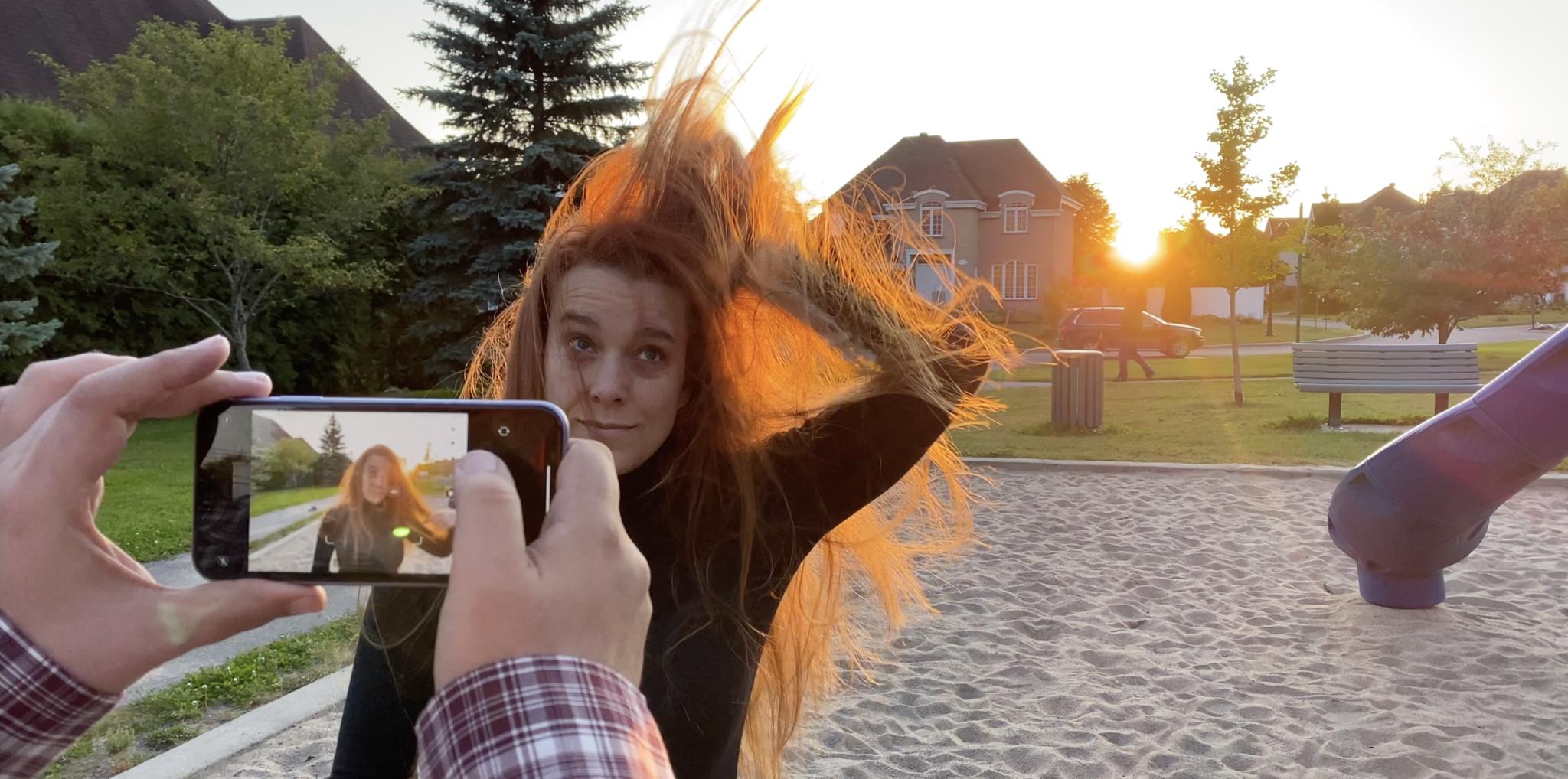
Because the iPhone 11 doesn't have a telephoto camera like the X, XS, or Pro, it still takes Portrait Mode photos using the wide angle. That means they're still not as up close and personal, which some people like worse and others like better.
I like having the option for both, but we'll talk about that in the Pro review.
Because the iPhone 11 does have an ultra-wide angle camera, though, it can now pull real depth data, and not just have to rely on the Focus Pixels and segmentation masks the way the iPhone XR and Pixels 2 and 3 did.
That means you can capture better portrait shots and of many more things, including and especially Pet-trait Modes of your cats and dogs.
Yeah, if Apple can say slofie, I can say Pet-trait. Go ahead, @me.
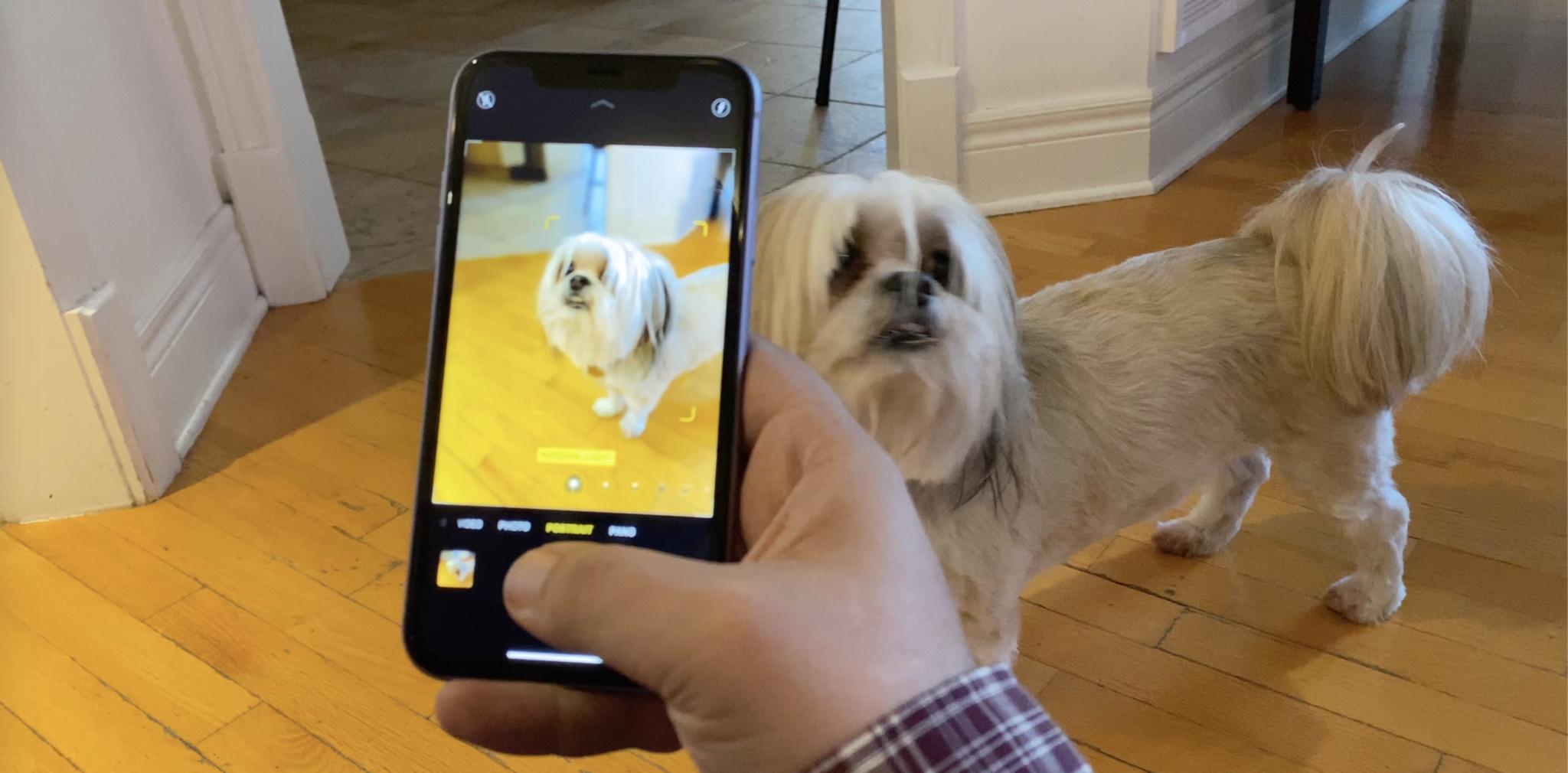
Another benefit of the ultra-wide angle camera comes if you turn on "Photos Capture Outside of the Frame" in Settings. It's a mouthful, but it works like this: When you take regular, wide angle shots, it'll fire the ultra wide angle as well. Then, if you cut out any faces or mess up any horizon lines, it'll give you a little auto magic frame button in the photos app that lets you auto magically re-frame it by pulling in that extra, ultra-wide data with a tap.
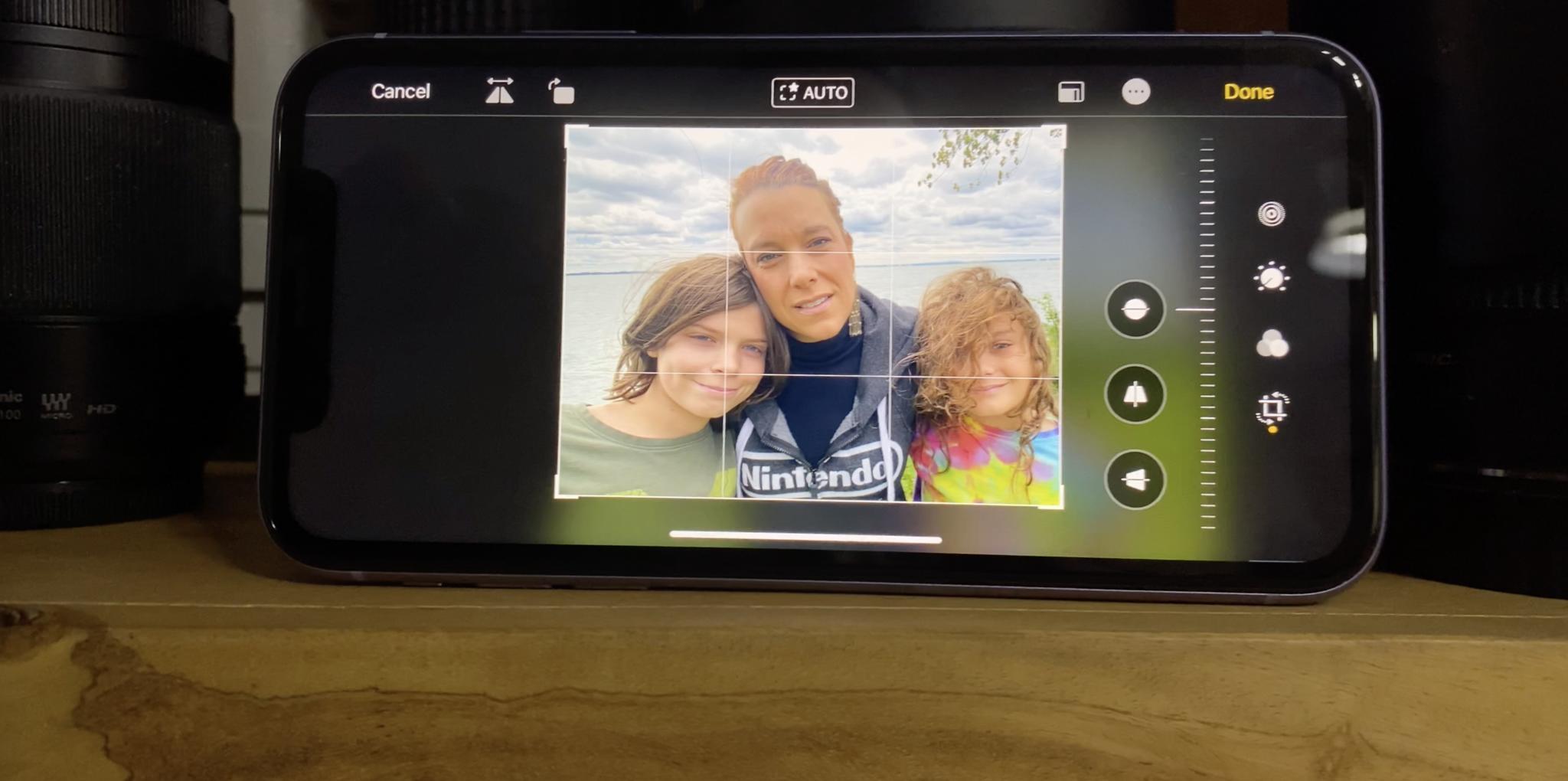
You've got 30 days to use it, or it'll drop the extra data so it doesn't clog up your storage. Otherwise, it's like a magic wand for your compositional screw ups. Sublime.
iPhone 11 Review: Night Mode
Yeah, Apple's a little late the computational light amplification game, but, surprise surprise, I really like the way they're doing it.
UPDATE: I had the opportunity to take the iPhone 11 out at night in New York City and compare its Night Mode to the Google Pixel 3, Huawei P30 Pro, and Samsung Galaxy Note 20. Hit play on the video to see the results.
First, the new cameras have better optical light sensitivity to begin with. Second, when Night Mode does engage, it's automatic, like the flash. So much so, it's almost unfortunate Apple's calling it Night Mode because it's really not a separate mode at all. As light gets lower, Night Mode just starts to come on.
You'll see its little icon just to the right of the flash turn yellow and then, depending on how dark it gets, it'll show a number from 1 to 3, signifying how many seconds you have to hold the photo in order to capture the image.

If it gets too dark, it'll fall back on the flash, and if you hate the very idea of Night Mode, you optical zealot you, you can tap the icon and turn it off, just like you've always been able to do with the flash.
Like Portrait Mode on the iPhone, the live preview shows the Night Mode result you're going to get before you even take the photo.
To me, that remains the single biggest advantage the iPhone camera maintains over most if not all of its competition. The performance of Apple's silicon and cleverness and quality of their imaging pipeline just lets the iPhone camera acts and feel more like a real camera.
It's such a different experience than something like the Pixel, which confounded me from the moment I got it by doing pretty much everything computational as a post process.
I like seeing what I'm going to get before I hit the shutter. That way, if there's anything I don't like about the composition or the previewed results, I can adjust before taking the shot. Not after the post-process takes several long seconds to resolve. Sometimes multiple times.
Same with Night Mode. If the number is at 1, it's almost instant. If it's at 3, it does take a second or so to save, like Portrait Mode did back on the iPhone 7. But that's it. What you saw is pretty much what you got.
I know some people don't care about stuff like that. But I also know a lot of photographers that do. Myself included.
I also like the artistic choices Apple is making with Night Mode.
Instead of turning night into simulated day, they're lighting up the subject, specifically people, but letting that light drop off fast, leaving a lot of the dark, moody atmosphere around them. So Night Mode still looks like night, just lit up.
If you have a tripod or you can prop your iPhone 11 up dead still, Night Mode will even let you take long exposures of up to 28 seconds, which can bring out almost every detail of star and skyline.
Combining everything we've talked about so far, the iPhone 11 is able to capture some pretty damn remarkable low light images now. External light sources can still mess with the color, but overall they do a great job preventing blowout and preserving color and detail in faces, textures, grains, and everything else that fills up the world around us, even at night.

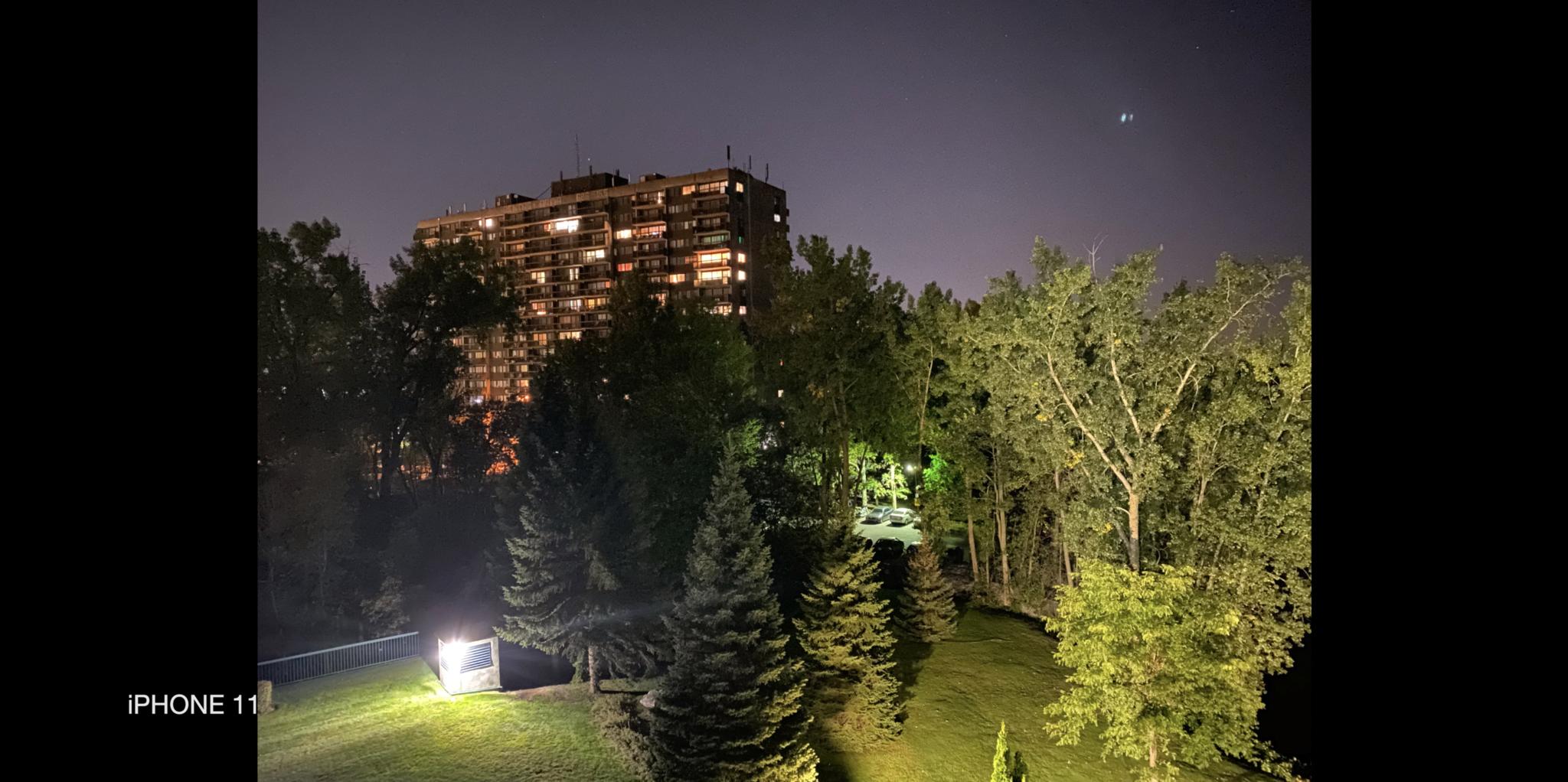
Again, it's Apple's long, steady, step-by-step investment in everything from silicon to computer vision and machine learning to optics to imaging pipelines to individual color calibration and system-wide color management that makes it so that when they do drop in new features, they're not just bolted on. They're like Voltron adding another Lion.
And, while I know the first thing every tech head is going to want to do is put it head-to-head with a bunch of Android phones — and full disclosure, I intend to grab some friends and do just that as well — the important thing here is what it all lets you do.
That's still the same goal it's always been: To take your phone out of your pocket or bag or off the table and, with absolutely not a second wasted, snap a photo of whatever it is you want to remember, wherever you are, whenever you want.
Now, that includes walks at night, concerts, dimly lit dinners at home or out and about, bars, camping under the stars — wherever you go, of whoever you go with.
UPDATE: There appears to be some ghosting or light artifacts in some Night Mode images. I've heard through the grapevine that Apple is aware of them and will be fixing them in a future update.
iPhone 11 Review: Video
Apple's had the best video camera on the market for a while now, you just don't hear about it much because most people focus more on the stills. But, from YouTube to Insta to Tiktok, to all these new streaming services launching so always, video isn't getting any less popular.
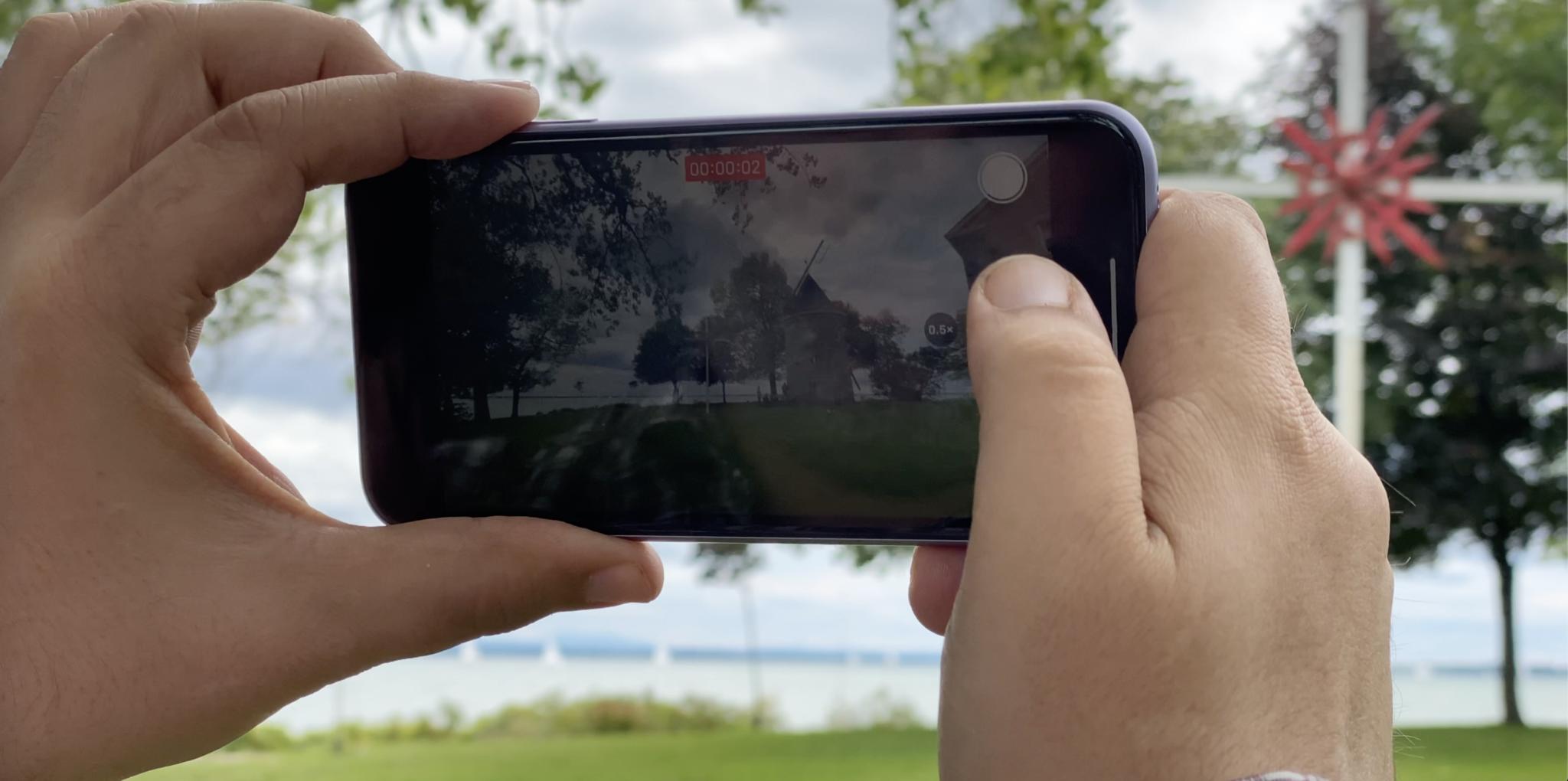
Last year the iPhone could capture 4K video at 60fps or 4K video at 30fps but with interleaved extended dynamic range. This year, the iPhone 11 can capture 4K video at 60fps with extended dynamic range. To quote Captain Raymond Holt: Hot. Damn.
And it can do it with improved cinematic stabilization as well. Apple's not trying to emulate a steadycam or gimbal here, though. They'll remove the shakes from a fairly stable shot as best as they can, but if you're walking, they still want it to look like you're walking. Still natural, just smoother and less jarring or janky.
They also want to emphasize consistency. So shadow and light and color match as much as possible for as long as possible.
There's a new QuickTake video mode, which lets you hold down the camera button to automatically take a video, and even track the subject of that video to, again, try to keep them looking as good as possible.
And yeah, if you hate portrait video, get ready to sharpen them pitchforks and flint up them torches. Or, you know, welcome to 2019.
From there, you can drag right to lock it into video mode, or drag left to get good old fashioned bursts.
While the basics will be instantly familiar to anyone who uses The Chat or the The Gram, I do think it imposes a heavier cognitive load and requires more eye-hand coordination to pull off. I got used to it, but it took a while
You can switch between wide and ultra wide angle while you're shooting, and as the camera changes the mics go from narrow and directed to wide and ambient, respectively. I know Samsung is doing something like this too, but for me, none of it will replace discreet mics any time soon.
iPhone 11 Review: Selfies
Our long, international, low-res, narrow-angle, normal speed selfie nightmare is over. The TrueDepth system on the iPhone 11 now includes a new, wider angle, 12mp RGB camera. With it, you can still take your regular old 70º field-of-view selfies or, with the tap of a button, switch to the wider angle, 85º field-of-view, and get in a groupie.
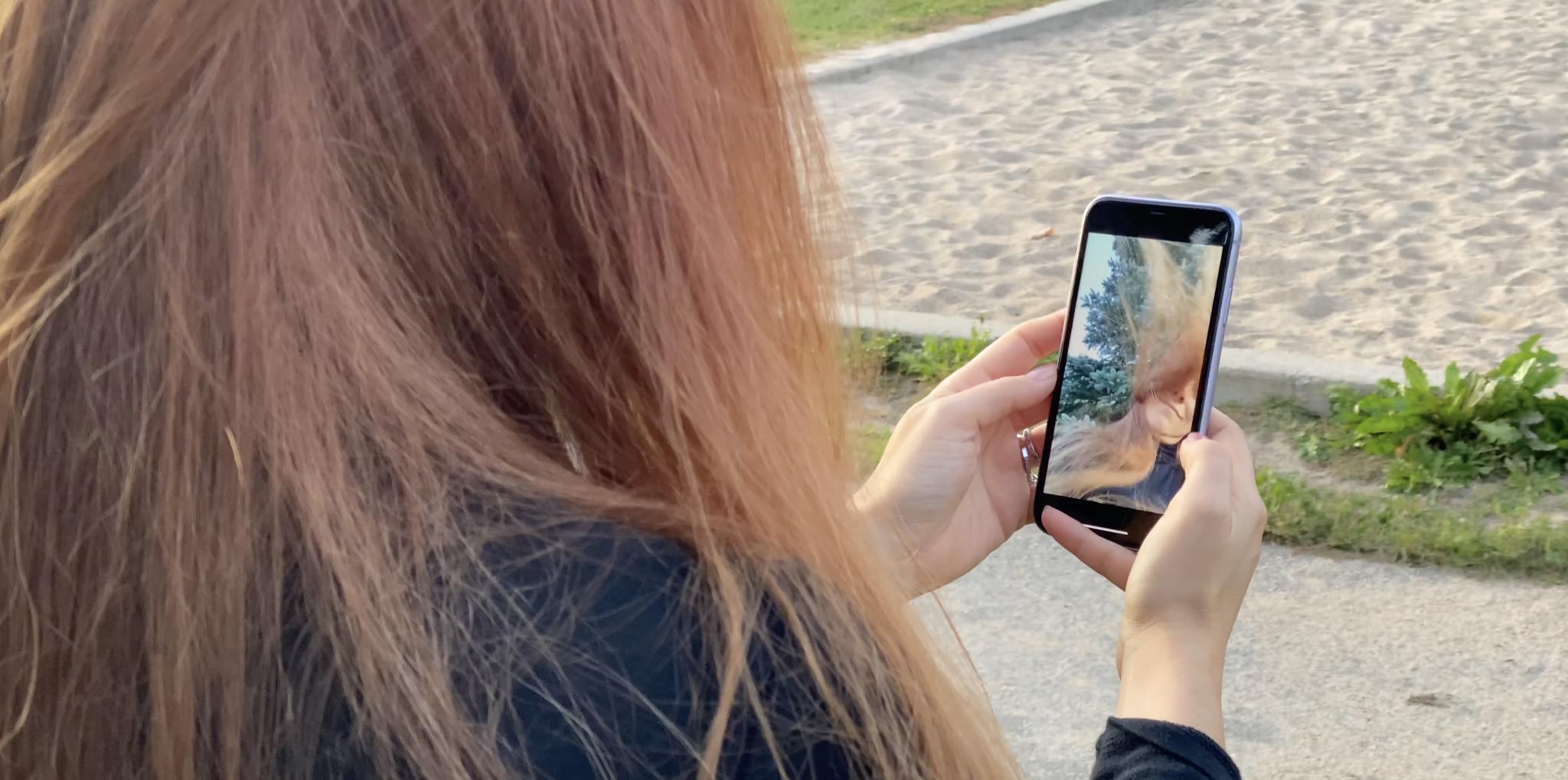
If you rotate to landscape, the camera will automatically switch to wide angle as well, though you can tap back to selfie and exclude your friends if you really feel that way about them.
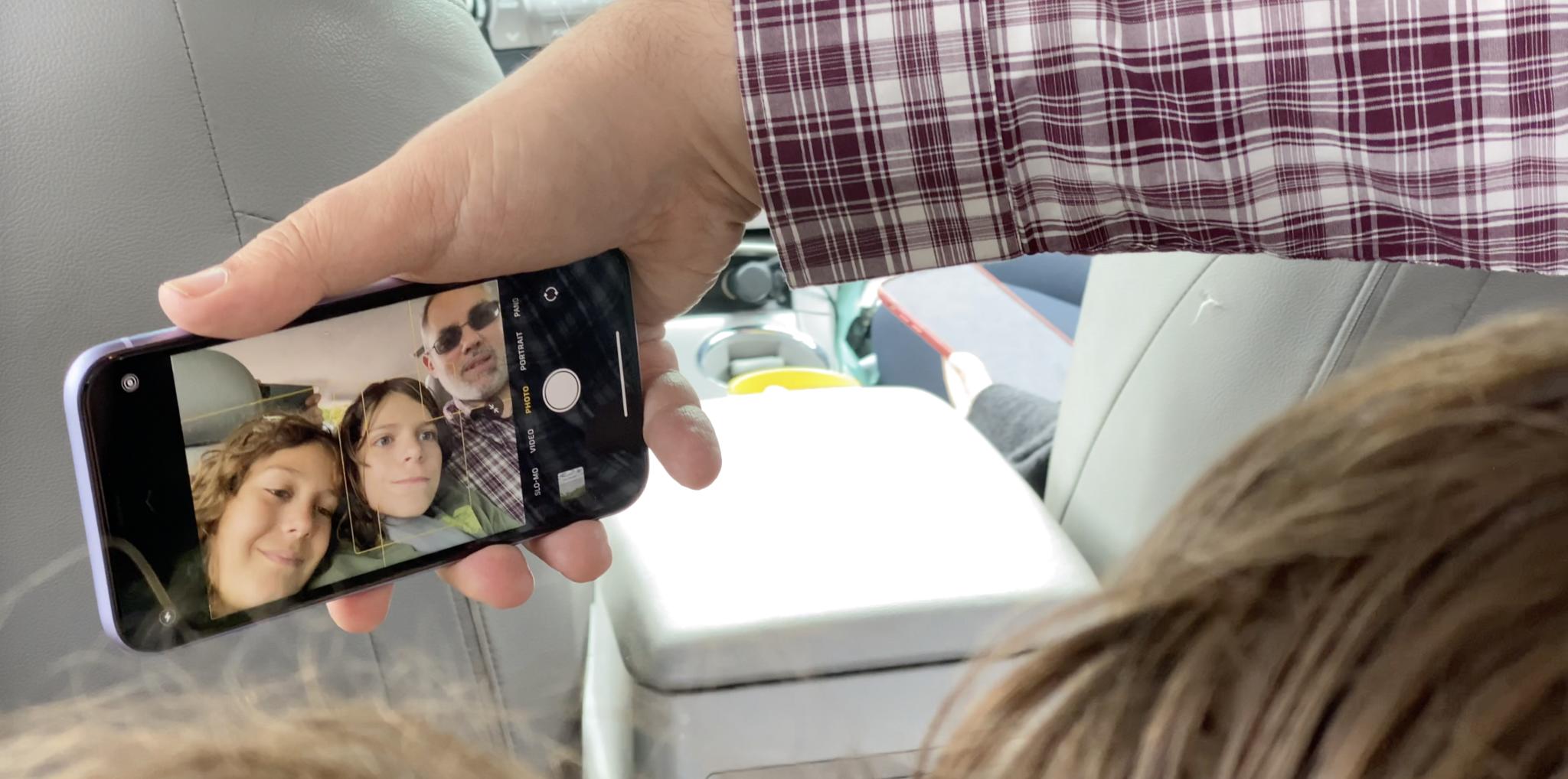
And yes, it's true, you can now go all the way up to 4K 60fps selfie video, or out to 1080p, 120fps for what Apple's calling slo-mo selfies, or slofies.
iPhone 11 Review: Battery life
I'm going to talk more about Apple's new A13 system-on-a-chip in the Pro review, but the third-generation Bionic packs roughly 20% more speed across its performance, efficiency, graphics, and neural engine cores than last year, all while saving significantly on power consumption as well — 40, 25, 30, and 15% respectively.
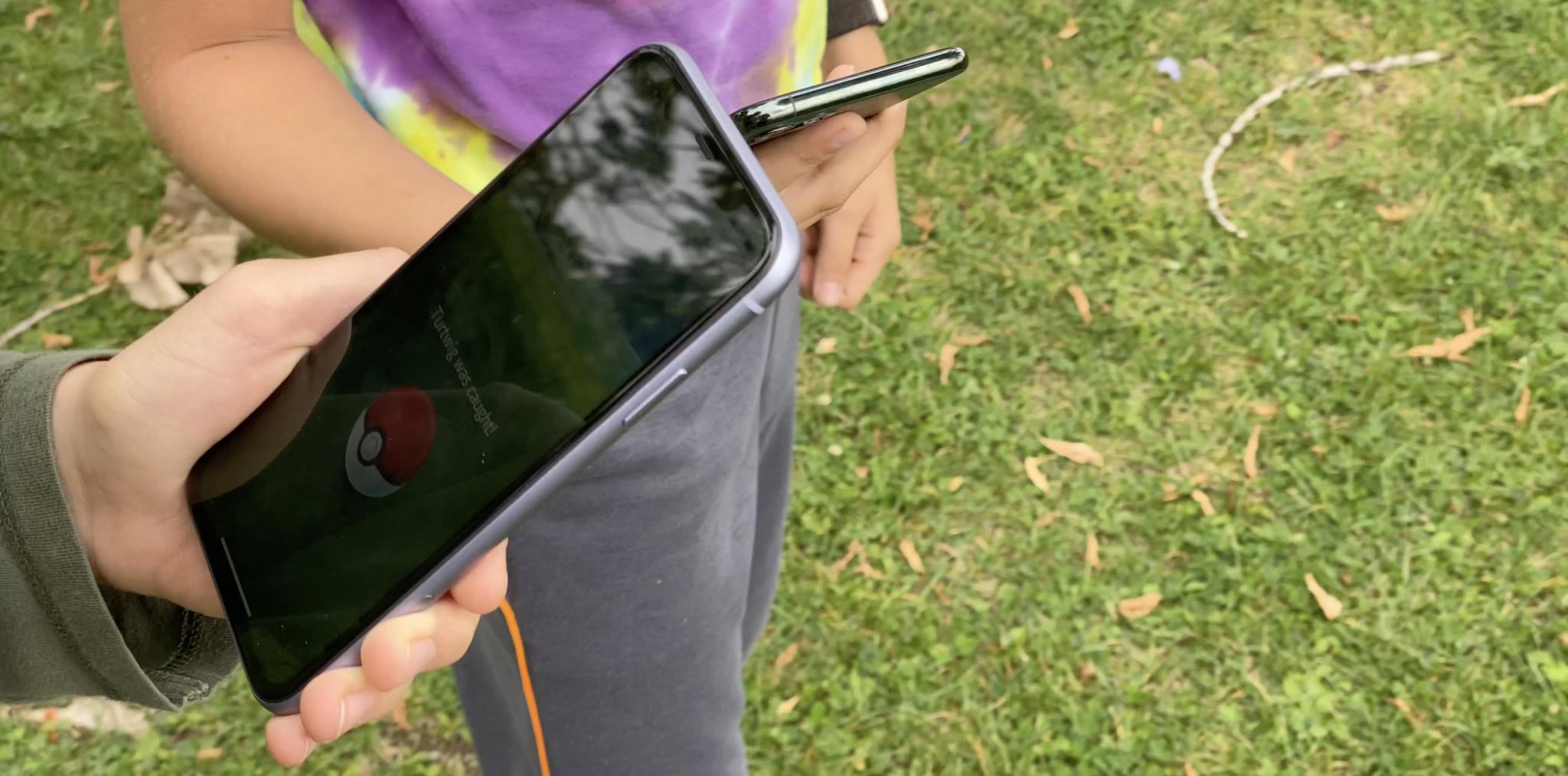
It also has 4GB of memory now, same as the Pros, instead of 3GB like on the XR.
Apple leapfrogged to the front of mobile silicon when they went 64-bit back with the A7. Competitors like Samsung, Huawei, and especially Qualcomm are upping their collective games, but what Apple's able to achieve, at the power they're able to achieve it, still seems lightyears ahead.
And yes, it's ridiculously OP, or over powered, for what most of us are doing with our phones today. But that kind of headroom means the iPhone 11 should be able to easily handle whatever you throw at it tomorrow, next year, and three to five years from now as well.
It's part of this weird thing Apple's doing, from silicon to software to services, to try to make iPhones last as absolutely long as possible, either for you or for whomever you hand, sell, or trade them on it.
Luckily, Wall Street seems too distracted by all the new subscription stuff to really notice. At least for now. But, seriously, shhhhh. Don't tell them.
The other chips inside offer up to 38% faster Wi-Fi 6, Gigabit LTE, and up to 45% longer range, beam-forming Bluetooth built in to boot.
A slight increase in size and efficiency has Apple claiming an extra hour of battery life for the iPhone 11, even over last year's reigning champion, the iPhone XR. That the iPhone 11 Pros have gained so much battery life this year that the regular 11 is no longer in the lead does nothing to diminish just how well it still does.
Roughly 17 hours of local video, 10 hours of streaming video, and up to 65 hours of wireless audio.
There's still only the classic 5 watt USB-A charger in the box, which some people prefer because low and slow best maintains battery health and small best fits into pockets and fanny packs, but the iPhone 11 Pro is finally getting a 18-watt USB-C PD cable and brick and it would have been great for the regular 11 to have gotten it as well.
You can buy it separately, though, and with it you can fast charge up to 50% in just 30 minutes. It's not the fastest of fast chargers, but again, you're trading speed for heat and reducing the effective life of your battery, so Apple isn't striking a bad balance here.
Inductive charging is also still 7.5 watts, same as last year, which also isn't as fast as the stuff Samsung is shipping these days, and a better place to argue with Apple about easing up on the heat and efficiency concerns, at least a little.
To test out battery life, I did what I usually do. The most grueling stress I can imagine — Pokemon Go Community Day. That's screen, GPS, cellular data, and the processor, all running and radiating continuously for hours.
And… they crushed it. Sure, it's just one slice of life, so I'll be using and abusing the iPhone 11 in a far wider range of real world situations over the next few weeks and I'll let you know how it holds up.
And no, if you're curious, Apple hasn't said anything about a smart battery case for the iPhone 11 yet. They don't always make them but when they do, like last year, they typically only come out later in the year.
But I'm hopeful. I love those cases, especially while location gaming and traveling.
iPhone 11 Review: Pricing and availability
The iPhone 11 starts at $699 for 64GB. Which, while I know is a lot for corporate buyers who just want a thin client for all their web apps, is starting to feel a little tight for regular customers. Even in the age of streaming, 4K and slow-mo selfies will chew through those GBs faster than ever. I'm at 69 GB already and counting.
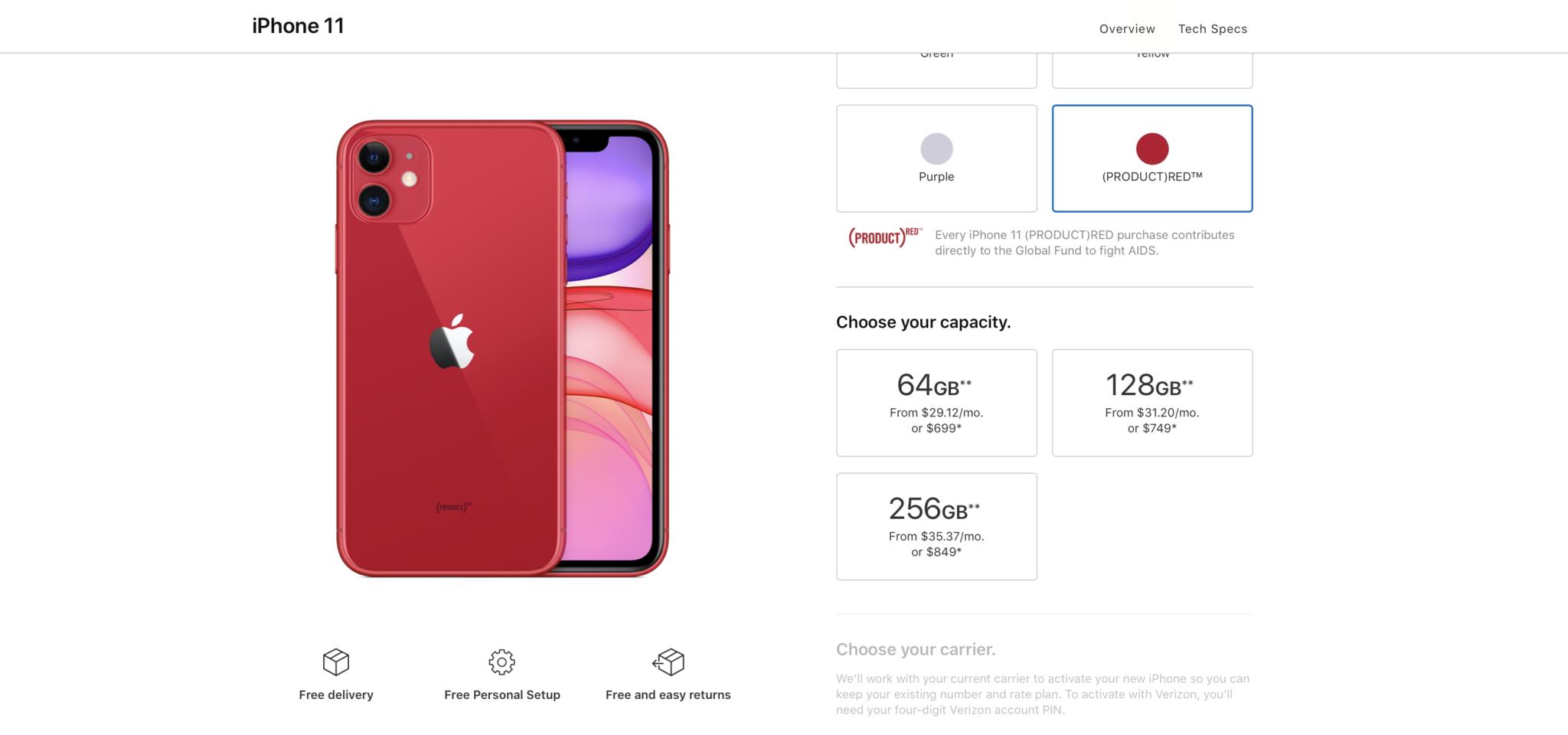
Apple takes the edge off that with the next step up, though. You can go to 128 GB for just $50 more, or $749, which is half the usual jump between storage tiers, and to 256GB for $849. The regular sized jump.
On the monthly plan, the difference between 64 and 128 works out to just a few bucks and, either way, that's what I'd recommend — and what I personally ordered — unless you know you'll need more.
You can get AppleCare+ to extend your warranty for $149 or with theft and loss protection for $249, if you want to. You can also go to an Apple Retail Store, if you have one nearby, not just for set up and tech support but for an increasingly wide range free Today at Apple classes that cover everything from photography to videography, design to development.
It's part of the value of the iPhone and I still don't think Apple does enough to really highlight everything you get for your money.
Some have said Apple is leaving millions if not billions of dollars on the table by dropping all the iPhone 11 prices by $50 compared to last year's iPhone XR. And, maybe.
But if the price drop results in more sales, then Apple could easily make up the difference. Maybe more than make it up.
That is, after all, why you make a best seller even better.
We'll only know for sure when the iPhone 11 launches this Friday, September 20th.
iPhone 11 Review: Bottom Line
Here's a bit of advice that took me way too long to figure out: Never let anyone, certainly not the internet, shame you about your technology choices:
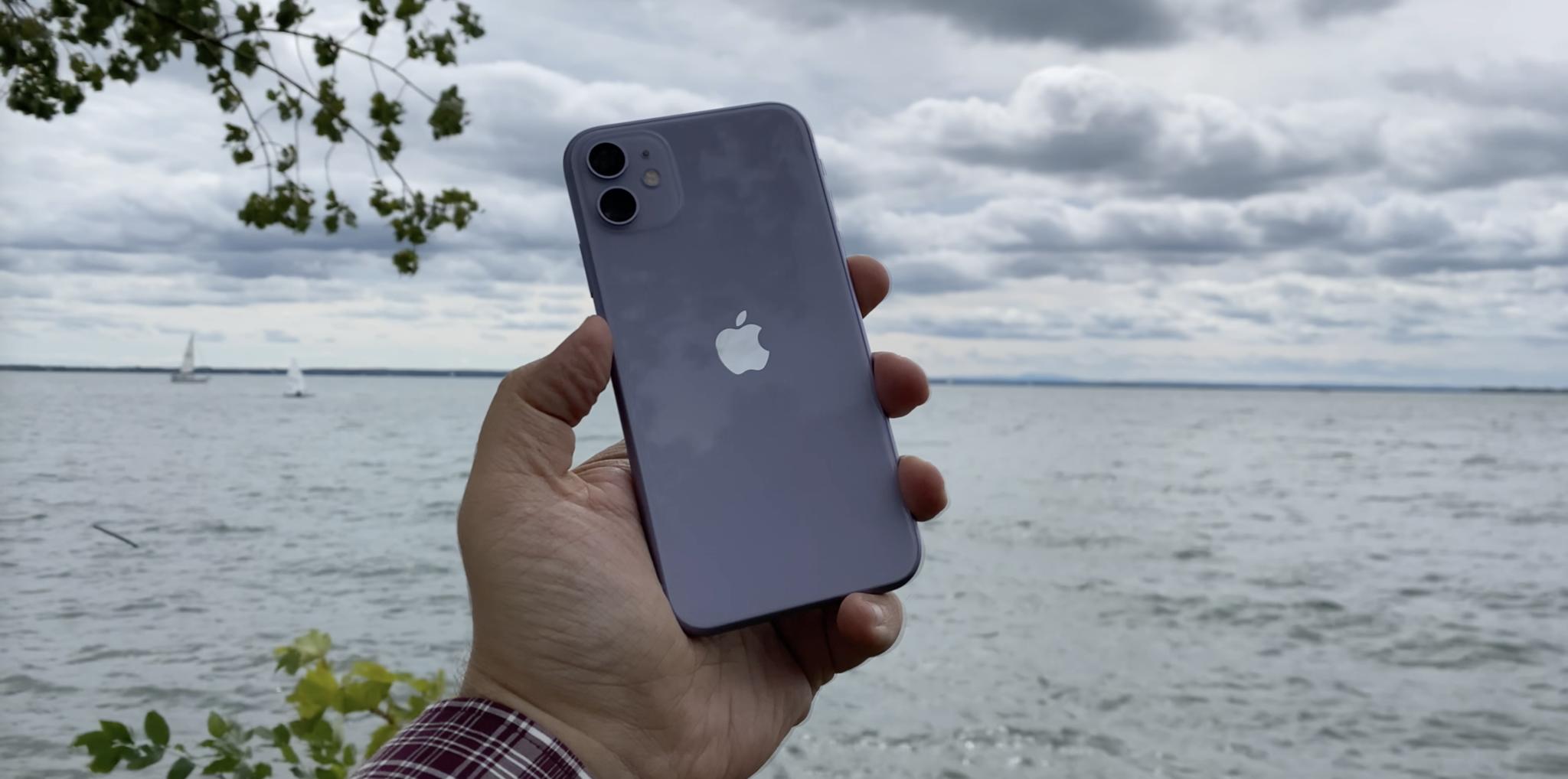
If you still have an iPhone 6 or 6s and you're looking to update, or still not, or you're on an iPhone XR and just want that second camera, whether you go for the iPhone 11 because it's $300 cheaper or because it has everything you need, price be damned, or if you decide you want the most expensive iPhone 11 Pro money can buy because, turns out, you want every bell to whistle, you're still every bit as nerdy and savvy as anyone. Anyone.
No one else knows your budget or your business, or gets to judge you for your choices.
You do you.
And, if what you're doing is the iPhone 11, I think that's an excellent choice. The best choice for most people.
Like I said at the beginning, with the added ultra wide camera and Night Mode, improved selfies, industry-leading A13 Bionic chipset, Gigabit LTE and Wi-Fi 6, and iOS 13 operating system, all starting at $699 — less if you have a trade-in or choose installments — iPhone 11 is the most compelling iPhone Apple has ever made.
The iPhone 11 is simply the new iPhone for everyone.

This is the new iPhone, not the pro, not the low.
The iPhone 11 is more akin to a replacement for the iPhone XS than the iPhone XR. It's powered by the newest processor, has the latest two-lens camera system, and comes in at an affordable starting price. It's the perfect iPhone for most people.
Originally published September 2019.

Rene Ritchie is one of the most respected Apple analysts in the business, reaching a combined audience of over 40 million readers a month. His YouTube channel, Vector, has over 90 thousand subscribers and 14 million views and his podcasts, including Debug, have been downloaded over 20 million times. He also regularly co-hosts MacBreak Weekly for the TWiT network and co-hosted CES Live! and Talk Mobile. Based in Montreal, Rene is a former director of product marketing, web developer, and graphic designer. He's authored several books and appeared on numerous television and radio segments to discuss Apple and the technology industry. When not working, he likes to cook, grapple, and spend time with his friends and family.

